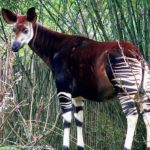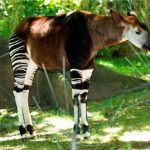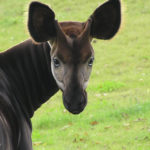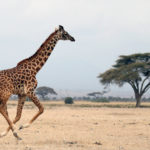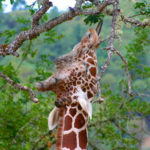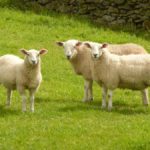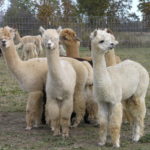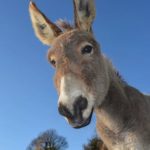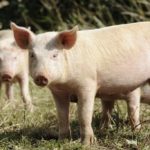Okapi
 Okapi are usually known as forest giraffes. Archaeologists discovered carved images of okapi in Egypt, thus concluding that these amazing animals were known to the ancient Egyptians. However, okapis were discovered later, only at the beginning of the 20th century. Refer to the following information to understand more about okapi.
Okapi are usually known as forest giraffes. Archaeologists discovered carved images of okapi in Egypt, thus concluding that these amazing animals were known to the ancient Egyptians. However, okapis were discovered later, only at the beginning of the 20th century. Refer to the following information to understand more about okapi.
Okapi is a mammal classified as a group of cloven-hoofed animals. In relation to giraffes, this is the family Giraffidae. The name of the genus is Okapia, and the name of the species is Johnston, after its discoverer, Henry Morton Stanley (British governor of Uganda).
Adult okapi are about 1.98 m in height and 2.5 m in length. Their head looks the same as the horse’s, and the wool is soft velvety, from purple-red to dark-brown in color. A characteristic feature of okapi, which is also found in giraffes, is that the front part is higher than the rear part, and also a long, tenacious tongue. However, the neck near the okapi is shorter and thicker than that of the giraffes.
The natural environment of okapi is dense and moist forests, preferably at high altitudes. Speaking of food habits, okapi herbivores, eating leaves, buds, grass, flowers and fruits. They are most active in the evening. Adult okapi can eat 18-29.5 kg of food per day.
Young okapi grows to adult size 3 years after birth. When a female okapi reaches puberty, she makes certain sounds to invite male okapi to mating. After fertilization, the pregnancy of the female lasts about 427-491 days, after which the female gives birth to a single calf.
According to estimates, in the first half of the 20th century, the okapi population was 30,000. Today their number has dropped to about 10,000 or slightly more. The main reasons for the decline in the number of okapi are habitat disturbances, illegal resource extraction, deforestation and hunting.
